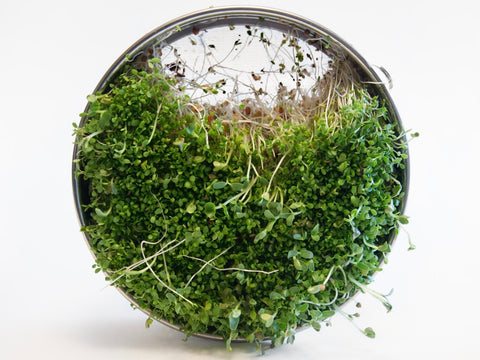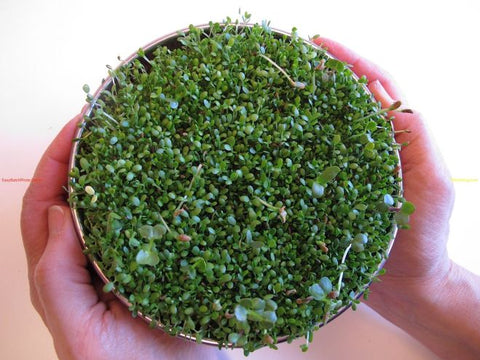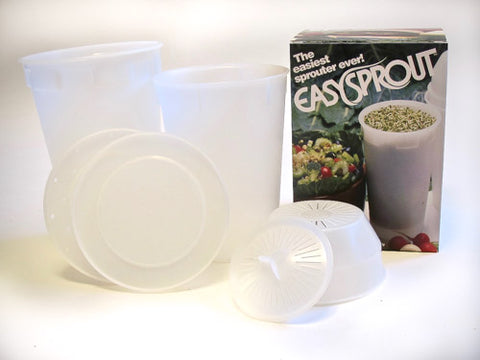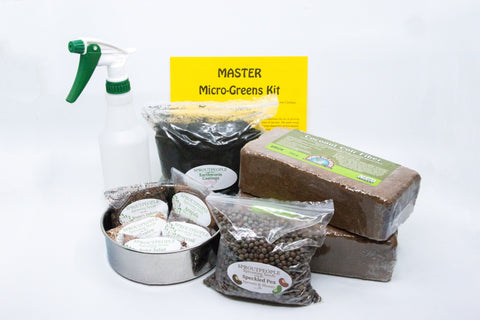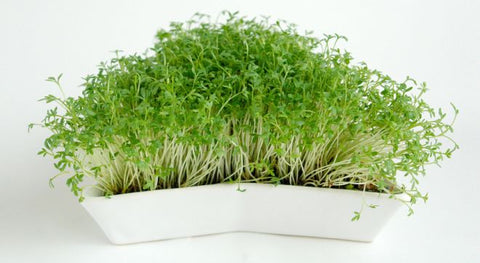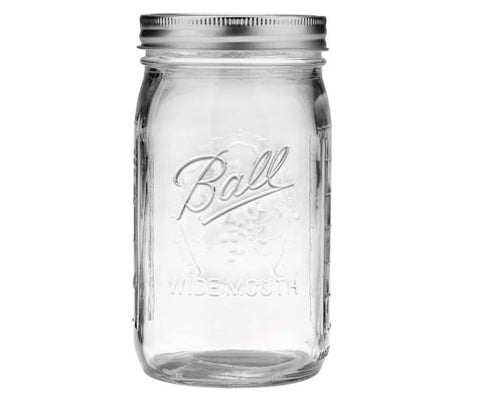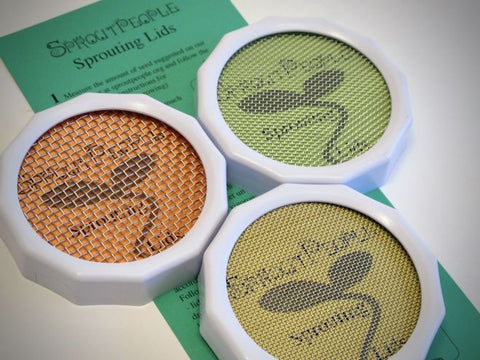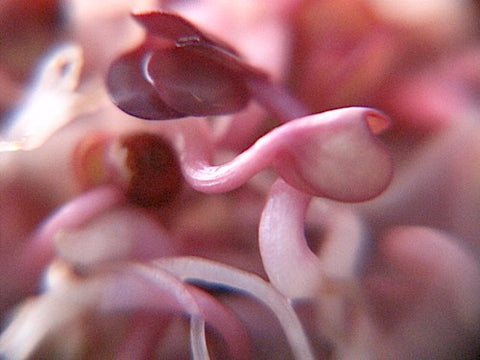
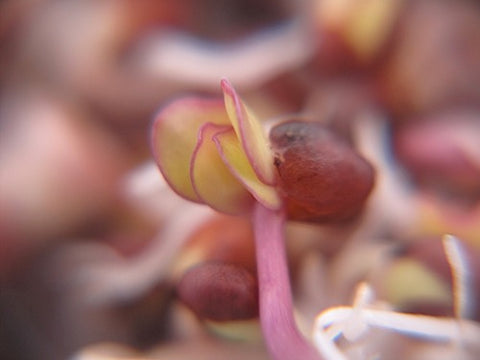
Cabbage Sprouts - Red Cabbage
Mild, sweet, Cabbage flavor available in multiple colors! This seed produces a stunningly beautiful deep red-purple sprout.
Vitamins A, B, C, E and K
Calcium, Iron, Magnesium, Phosphorus, Potassium, Zinc
Carotene, Chlorophyll, Amino Acids, Trace Elements
Antioxidants
Protein: 20-25%
Fresh and sweet like cabbage. Crunchy and exciting for salads and sandwiches.
The amount of Cabbage Sprouts - Red Cabbage produced by 1 unit of Seed. For Example 2:1 means that 1 pound of Seed will produce 2 pounds of Sprouts or whatever crop you are growing. You do not have to grow them all at once of course, unless you wish to =:-D
The time it takes to grow a finished 3 - 6 days, or other crop (Micro-Greens, Grass, Greens) from a dry Seed. Note: This "finished" Sprout is our preference. you may grow them for as long as you want! In fact, we suggest that you taste them at every rinse to discover when you like them best.
How to Grow Red Cabbage Sprouts
- Soak 3 Tbs. of seed in cool water for 4-12 hours.
- Drain off soak water. Do not ever soak again.
- Rinse thoroughly.
- Drain Thoroughly.
- Rinse and Drain with cool water every 8-12 hours.
- On day 3, move your Sprouter to indirect sunlight.
- Continue to Rinse and Drain every 8-12 hours.
- Harvest on day 5 or 6, when the leaves are open and most of them are green.
- De-Hull your crop if you like, before Refrigerating.
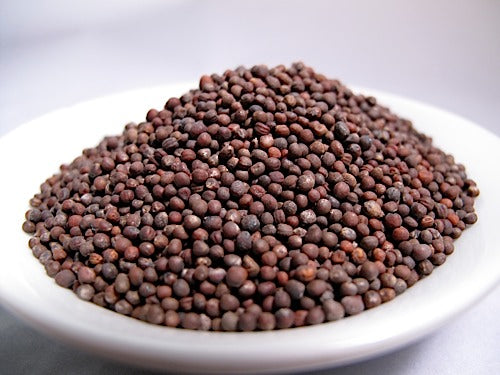
Red Cabbage Seed
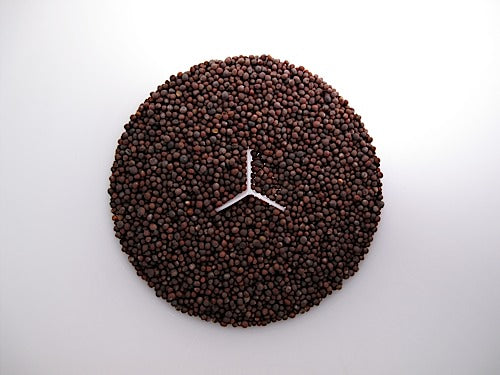
Dry Cabbage awaits Soaking in an Easy Sprout Sprouter.
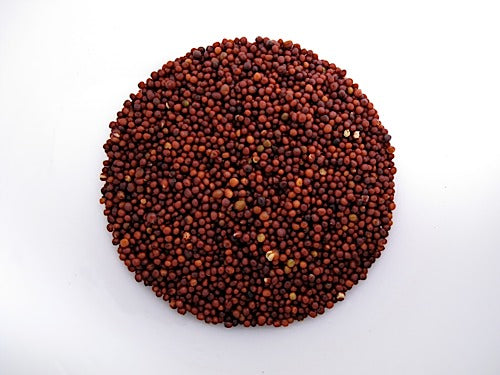
12 hours later... another Rinse/Drain cycle.Remember to be Thorough - especially in your Draining.
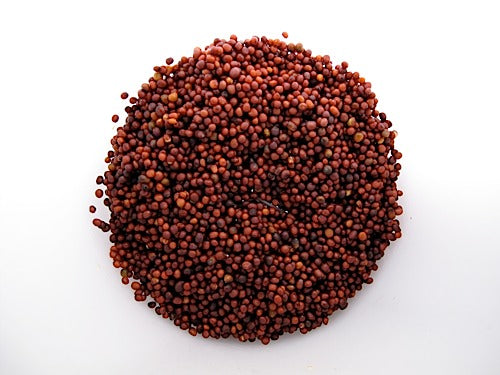
12 hours later... another Rinse/Drain cycle.
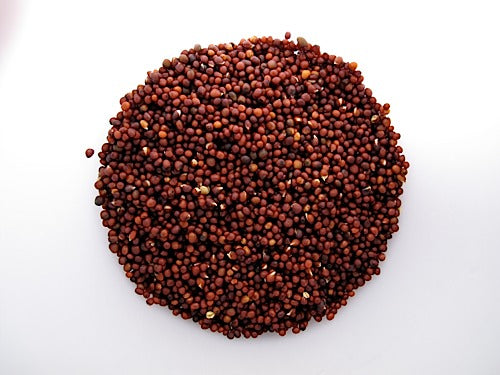
12 hours later... another Rinse/Drain cycle.
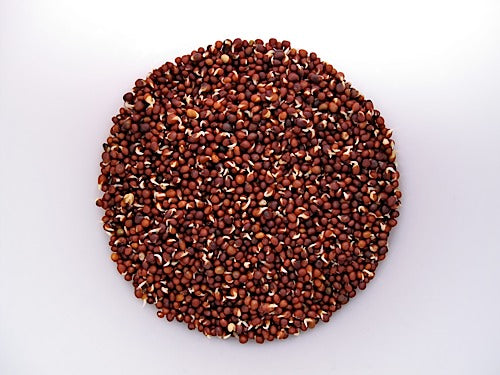
12 hours later... another Rinse/Drain cycle.
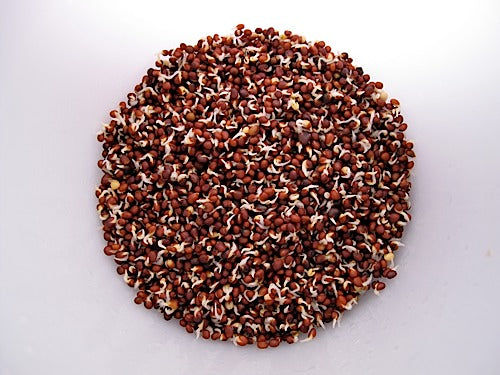
12 hours later... another Rinse/Drain cycle. Somewhere in here, you will get a great education as regards Root Hairs too. They are normal in many crops - including Brassicas.
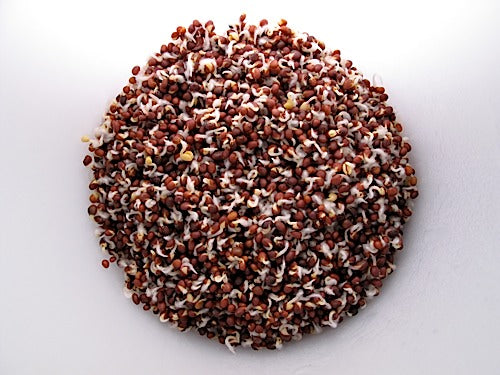
12 hours later... another Rinse/Drain cycle.
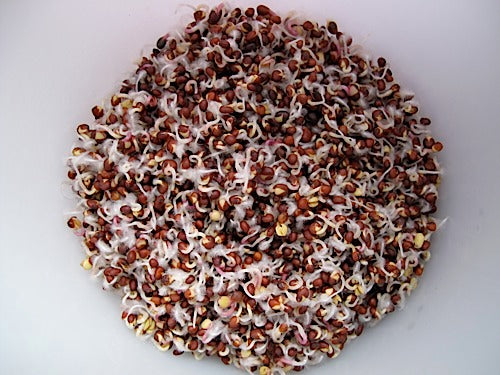
12 hours later... another Rinse/Drain cycle.
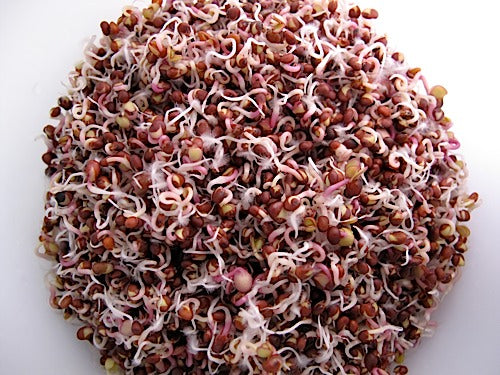
12 hours later... another Rinse/Drain cycle.
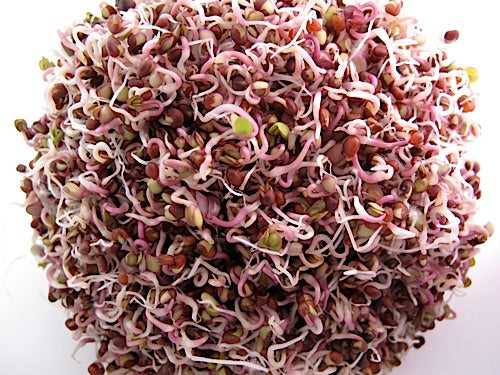
12 hours later... another Rinse/Drain cycle.
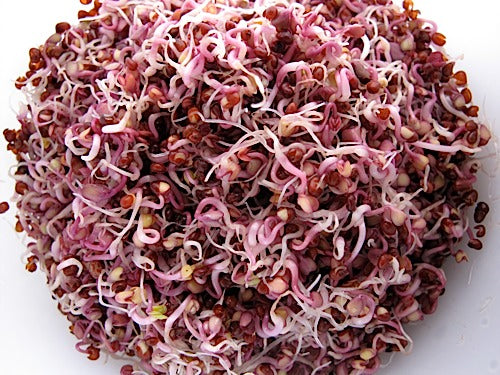
12 hours later... another Rinse/Drain cycle. Remember to Drain especially thoroughly, unless you are using a De-Huller - in which case thorough will do.
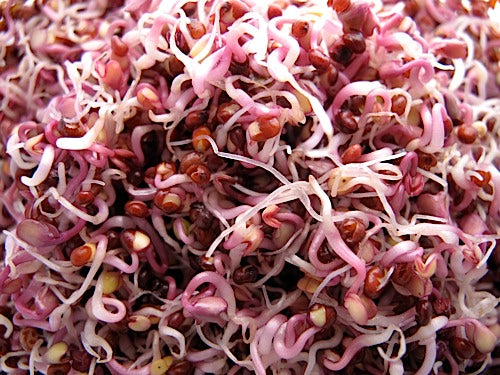
12 hours later.... Harvest Time!

Red Cabbage Seed

Dry Cabbage awaits Soaking in an Easy Sprout Sprouter.

12 hours later... another Rinse/Drain cycle.Remember to be Thorough - especially in your Draining.

12 hours later... another Rinse/Drain cycle.

12 hours later... another Rinse/Drain cycle.

12 hours later... another Rinse/Drain cycle.

12 hours later... another Rinse/Drain cycle. Somewhere in here, you will get a great education as regards Root Hairs too. They are normal in many crops - including Brassicas.

12 hours later... another Rinse/Drain cycle.

12 hours later... another Rinse/Drain cycle.

12 hours later... another Rinse/Drain cycle.

12 hours later... another Rinse/Drain cycle.

12 hours later... another Rinse/Drain cycle. Remember to Drain especially thoroughly, unless you are using a De-Huller - in which case thorough will do.

12 hours later.... Harvest Time!
Yields approximately 3 Cups (1/2 lb.) of Sprouts
Prep 3 Tablespoons of seed* then transfer (if necessary) into a bowl or into your Sprouter. Add 2-3 times as much cool (60°-70°) water. Mix seeds up to assure even water contact for all. Note: Brassicas tend to float. Try to sink those that do by knocking them down with your fingers. It isn't a big deal but it is a good habit.
Allow seeds to Soak for 6-12 hours. Empty the seeds into your Sprouter (if necessary). Drain off the soak water. You may water plants or use it in stock if you like - it has nutrients in it. Rinse thoroughly with cool (60°-70°) water. Drain thoroughly!
Set your Sprouter anywhere out of direct sunlight and at room temperature (70° is optimal) between Rinses. This is where your sprouts do their growing. We use a counter top - in the corner of our kitchen, but where the sprouter won't get knocked over by cats, dogs, kids or us. We don't mind the indirect sunlight or the 150 watts of incandescent light, because light just does not matter much. A plant can only perform photosynthesis when it has leaves. Until a plant has leaves, light has little if any effect. Sprouts also happen to like air-circulation, so don't hide your sprouts. This will be plenty of light when the sprouts are ready for it.
Rinse and Drain again every 8-12 hours for 3 days. As long as you grow you have to keep the sprouts happy!
Always be sure to Drain very thoroughly. The most common cause of inferior sprouts is inadequate drainage. Even the best designed Sprouting Device holds water, so pay special attention to this step.
Note: These wonderful little Brassica plants have a unique root structure. Brassicas will show microscopic roots starting around day 3. They are called root hairs and are most visible just before Rinsing when the sprouts are at their driest. When you Rinse, the root hairs will collapse back against the main root - becoming invisible to you. These root hairs impress many people as mold - but they are not. Now you know. Isn't learning fun?!
Greening On the 4th day relocate your sprouts if necessary. If you've been keeping them away from light, move them. Avoid direct sun - it can cook your sprouts. Indirect sunlight is best but virtually any light will do. Experiment - you will be amazed at how little light sprouts require to green up. Photosynthesis is a marvel!
Continue to Rinse and Drain every 8-12 hours. As long as you grow, keep keeping your sprouts happy. Always Drain Thoroughly!
Finishing Your sprouts will be done during day 5 or 6. The majority of sprouts will have open leaves which will be green if you exposed them to light.
De-Hull Before your final Rinse; remove the seed hulls. Brassica sprout hulls are quite large (relative to the seed and sprout) and they hold a lot of water - which can dramatically lessen the shelf life of your sprouts - so we remove them thusly:
Transfer the sprouts to a big (at least 2 times the volume of your Sprouter) pot or bowl. Fill with cool water. Loosen the sprout mass by pulling it apart with your fingers or a fork. Hulls will rise to the surface. Keep pulling your sprout mass apart and move them around slowly, pulling them down - under the water - to make room for the hulls to rise. Skim the hulls off the surface of the water and compost them. Return the sprouts to your Sprouter for their final Rinse and Drain. You can also use our Dehuller (a small salad spinner with an excellent design that minimizes the sprouts that escape in the dehulling process). That's the short course - here is the full lesson. Better yet, here is our video on de-hulling.
Harvest If you Dehulled with our Dehuller, or used a salad spinner after dehulling in a bowl, you can go right to refrigeration. If not... Your sprouts are done 8-12 hours after your final Rinse. After the De-Hulling and the final Rinse we need to Drain very thoroughly and let our sprouts dry a bit. If we minimize the surface moisture of our sprouts they store much better in refrigeration, so we let them sit for 8-12 hours....
Refrigerate Transfer the sprout crop to a plastic bag or the sealed container of your choice. We have Produce Storage Bags that will extend shelf life substantially.
* If using Sproutpeople's Single Harvest Pack - use the whole bag (for a one-quart Sprouter). It will produce a crop of approximately 8 ounces.
These seeds yield approximately 5:1 - which means the sprouts will weigh 5 times as much as the seed you start with, but, they will increase even more in volume - so don't start with more than 3.5 Tablespoons per quart/litre of sprouter capacity.
Micro-Greens Note:
You can also grow Cabbage as a Micro-Green as described on our Cabbage Patch page.
Cabbage is a small - mostly round seed which produces a mild Brassica flavored sprout. Easy to grow and very tasty, especially if you like Cabbage. Our Red Cabbage produces a typically shaped Brassica leaf which is a gorgeous red with purple highlights. Lovely!. Organic cabbage seed is quite rare, and so very expensive. You know - it's a supply and demand thing.
Note: Canadian and US researchers have found that Brassicas contain antioxidants such as sulfurophane. Cabbage is a Brassica.
This current seed is very demanding. It requires Maniacal Draining, and it grows a bit slower, but it will grow well if you give it what it needs.
Seed Shelf Life: 5 years. Store in cool, dark, dry spot. Store in freezer to extend shelf life.

